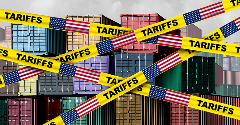News
Is meat consumption a barrier to China’s GHG emission-lowering potential?
8 Jan 2025New research by the global industry community Food and Land Use Coalition (FOLU) finds that adopting healthy diets could halve the amount of greenhouse gas (GHG) emissions in China from the country’s agricultural sector by 2050.
FOLU has previously found that China’s food and land use system contributes approximately 10% of the country’s total GHG emissions. Now, new research by FOLU finds that China could lower its agricultural-source emissions by between 46% and 51% by 2050.

Outlined in its new paper, ‘The impacts of healthy diets on future greenhouse gas emissions in China’, FOLU finds that GHG emissions from China’s agricultural sector could be nearly halved by 2050 if the country implements dietary changes.
GHG emissions decrease: Is it possible amid rising meat consumption?
China’s meat-eating habits have grown in recent years, with almost 100 million tonnes of consumption in 2021. As this figure amounts to more than a quarter (27%) of the world’s total meat consumption, McKinsey research shows China is the largest consumer meat market worldwide.
The number of ‘traditional’ Chinese consumers eating meat regularly sits at an average of 57%. While this is higher than its British, Dutch and German peers, 43% of the Chinese population are described as ‘conscious consumers’, opting for vegan, vegetarian, flexitarian or conscious meat-eating diets.
Plant-based popularity in China is considered a saving grace when mitigating GHG emissions from the country’s agricultural sector. “While implementing dietary changes on a large scale is a challenge, it is important to note that traditional Chinese diets are already rich in plant-based foods, such as vegetables and tofu,” Seth Cook, Asia Coordinator at FOLU told Ingredients Network.
The presence of this cultural precedent, therefore, provides a foundation for promoting the adoption of healthier, more sustainable diets. “However, policy incentives, public health campaigns, and stakeholder collaboration will be necessary to facilitate and encourage this transition,” Cook added.
Findings link diet, agriculture and climate change
Researchers explored three different scenarios to examine the consequences of making changes to dietary patterns: business-as-usual (BAU); adopting EAT Lancet Commission recommendations for healthy and sustainable diets; and the most recent Chinese dietary guidelines (CDG-22). They analysed how these would impact GHG emissions generated from the agricultural sector.
FOLU based its findings on the latest Chinese dietary guidelines (CDG-22) or the EAT Lancet Commission recommendations for healthy and sustainable diets, which led to considerably lower emissions than the BAU approach. The CDG-22 and EAT Lancet recommendations advise eating various plant-based foods, including fruits, vegetables, legumes, nuts and cereals, with moderate amounts of eggs, poultry, meat and dairy products.
The industry coalition’s findings show that in both the CDG-22 and EAT Lancet scenarios, lower emissions are achieved by a reduction in methane (CH4) emissions. Decreased levels of nitrous oxide (N2O) emissions also contribute to this reduction, albeit to a lesser extent than CH4. Lower CH4 levels account for 67-68% of the total GHG emissions reduction in both scenarios. “Methane is a potent GHG with far greater heat-trapping potential than CO2,” said Cook.
FOLU states that shifting diets in China towards those recommended by the CDG-22 or EAT Lancet would also have considerable health benefits, helping to reduce the public health costs relating to obesity and non-communicable diseases such as type II diabetes, cancer, and cardiovascular diseases. “So it is partly a question of convincing key policymakers in China that lower meat consumption among the population would help reduce onerous public health costs, which the government is very concerned about,” Cook added.
Wider support for sustainable diets
“Organisations and individuals in China – including some academics and social media influencers – are encouraging people to adopt healthier, more sustainable diets, including lower meat consumption,” says Cook.
Often, this is presented in terms of climate-friendly diets. On the academic side, for example, the Academy of Global Food Economics and Policy at China Agricultural University publishes an annual China and Global Food Policy Report. Goal Blue, a Chinese non-government organisation (NGO) is a social media influencer, promoting sustainable living.
“At the same time, it is important that all nations with high meat consumption make an effort to shift towards healthy and sustainable diets rather than only putting the focus on China,” Cook said. “The first question that we as an international organisation get asked in countries like China when we raise the issue of diets and meat consumption is: What is being done in countries like the US, Britain, and Australia with much higher per capita meat consumption than China to reduce meat consumption there?” Cook adds.
Related news

NMN: An on-trend ‘fountain of youth’ ingredient for anti-ageing products
24 Oct 2025
Dubbed an “on-trend fountain of youth ingredient” by Mintel, NMN is booming in anti-ageing ingestible products in Asia – but regulatory roadblocks are thwarting NPD efforts elsewhere, say experts.
Read more
Food security-insecurity gap grows, hitting vulnerable regions hardest
16 Oct 2025
While food security has increased in most countries, the world’s most vulnerable nations’ struggles continue and intensify, a USDA analysis reveals.
Read more
India’s biscuit and cookie consumers want extra indulgence
16 Sep 2025
Premiumisation, health consciousness, and a focus on texture are driving new product developments (NPD) in the Indian biscuit and cookie market, Mintel figures suggest.
Read more
Climate change threatens matcha supplies as social media fuels matcha mania
8 Sep 2025
Matcha’s popularity is rising across the globe, yet shrinking harvests caused by record-breaking heatwaves in Japan are dwindling global supplies.
Read more
Australia's snacking sector achieves near-universal appeal
22 Aug 2025
As many as 99% of Australian consumers snack daily, with generational differences and increasing demands presenting novel manufacturing opportunities, according to Mintel data.
Read more
World Food Safety Day shines a spotlight on science
19 Jun 2025
On 7 June, the World Health Organization (WHO) held its annual World Food Safety Day, highlighting the role scientific research and innovation play in supporting consumers’ health.
Read more
Africa and Middle East most vulnerable markets to food fraud
28 May 2025
Consumers in Africa and the Middle East face a higher risk of consuming adulterated foods – especially with tariffs causing chaos in the global food supply chain, experts warn.
Read more
East takes on West in the fight for future food flavours
30 Apr 2025
Asian and South American flavours are now key components on global menus, driven by a growing global appetite for culinary mashups.
Read more
Will Trump lower tariff hikes?
25 Apr 2025
The US President’s plan to reduce the 145% tariffs on China’s food and beverage market raises questions over whether a turnaround is likely for other regions.
Read more
Future F&B flavours favour exploration and explosive taste profiles
25 Mar 2025
Exploration and experimentation will define the future of flavour, according to Mintel, as consumers seek out taste profiles and textures that offer an adventurous eating experience.
Read more